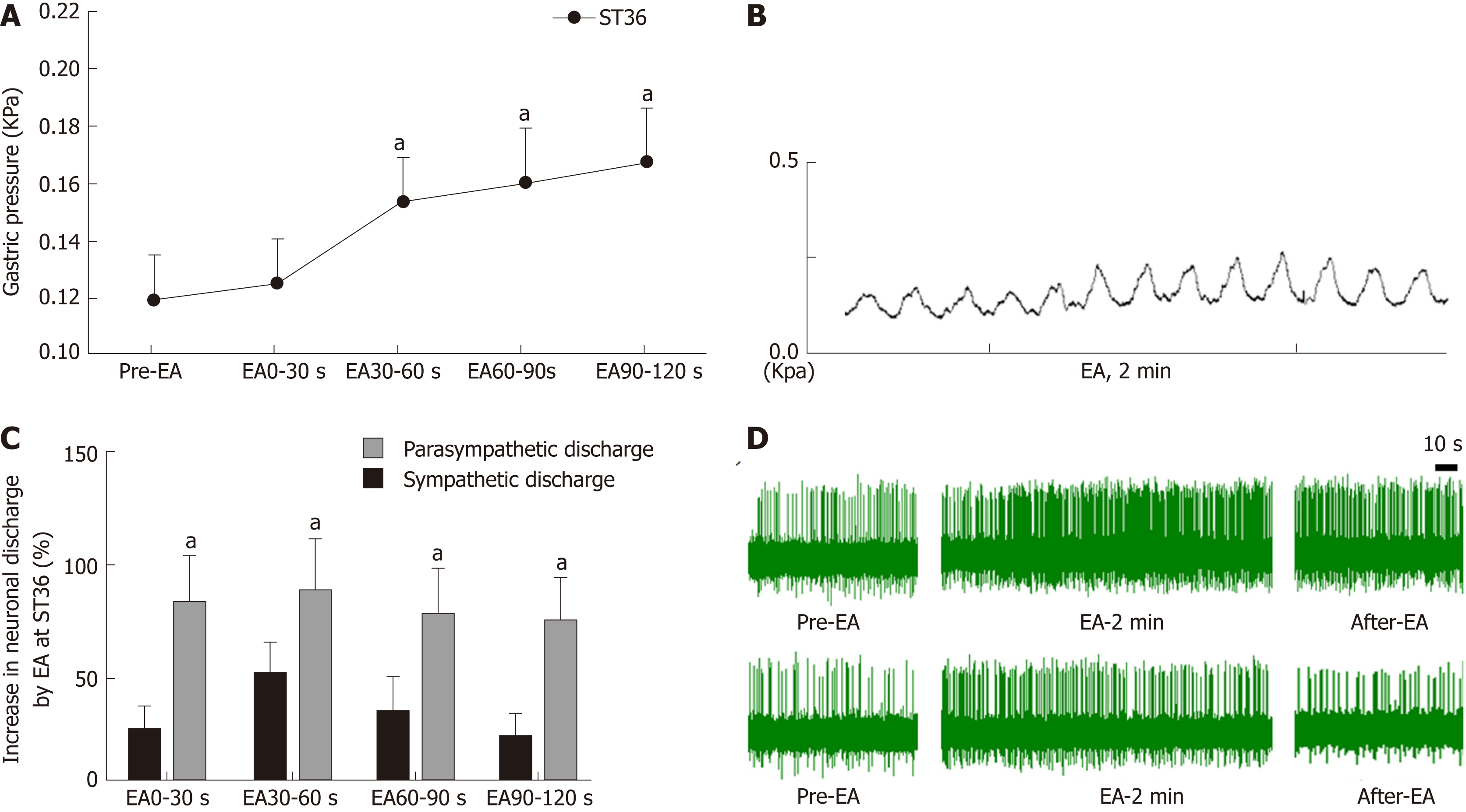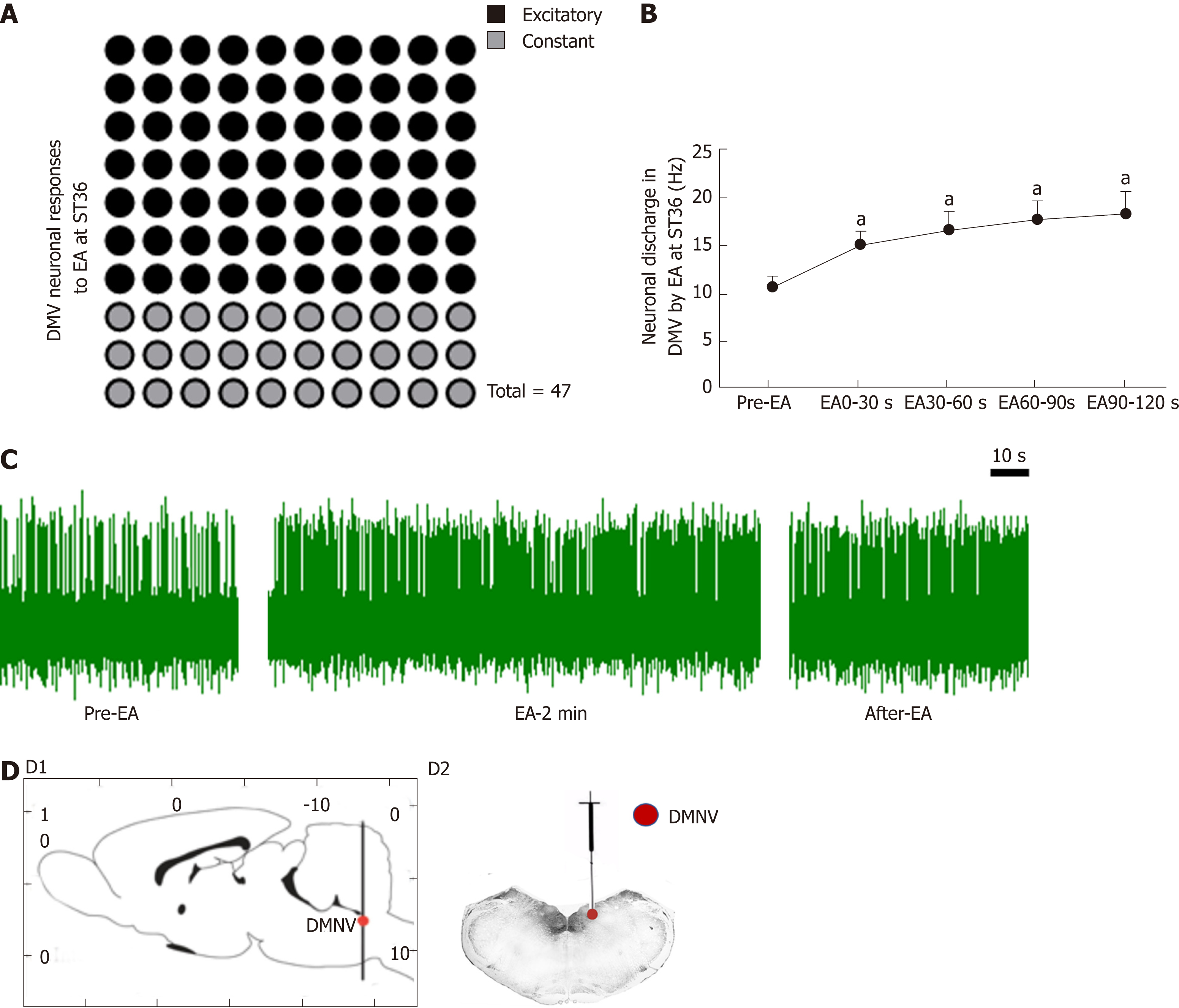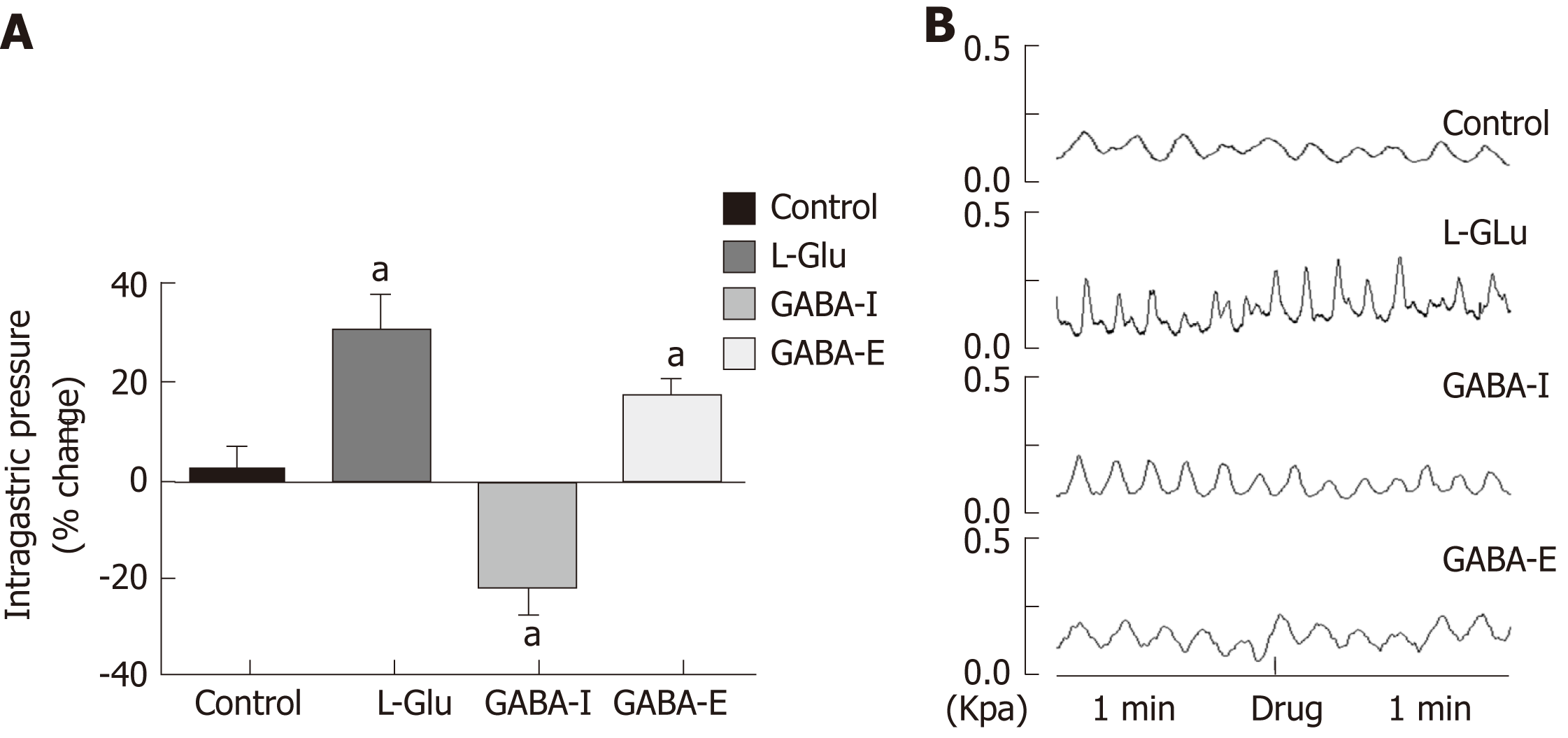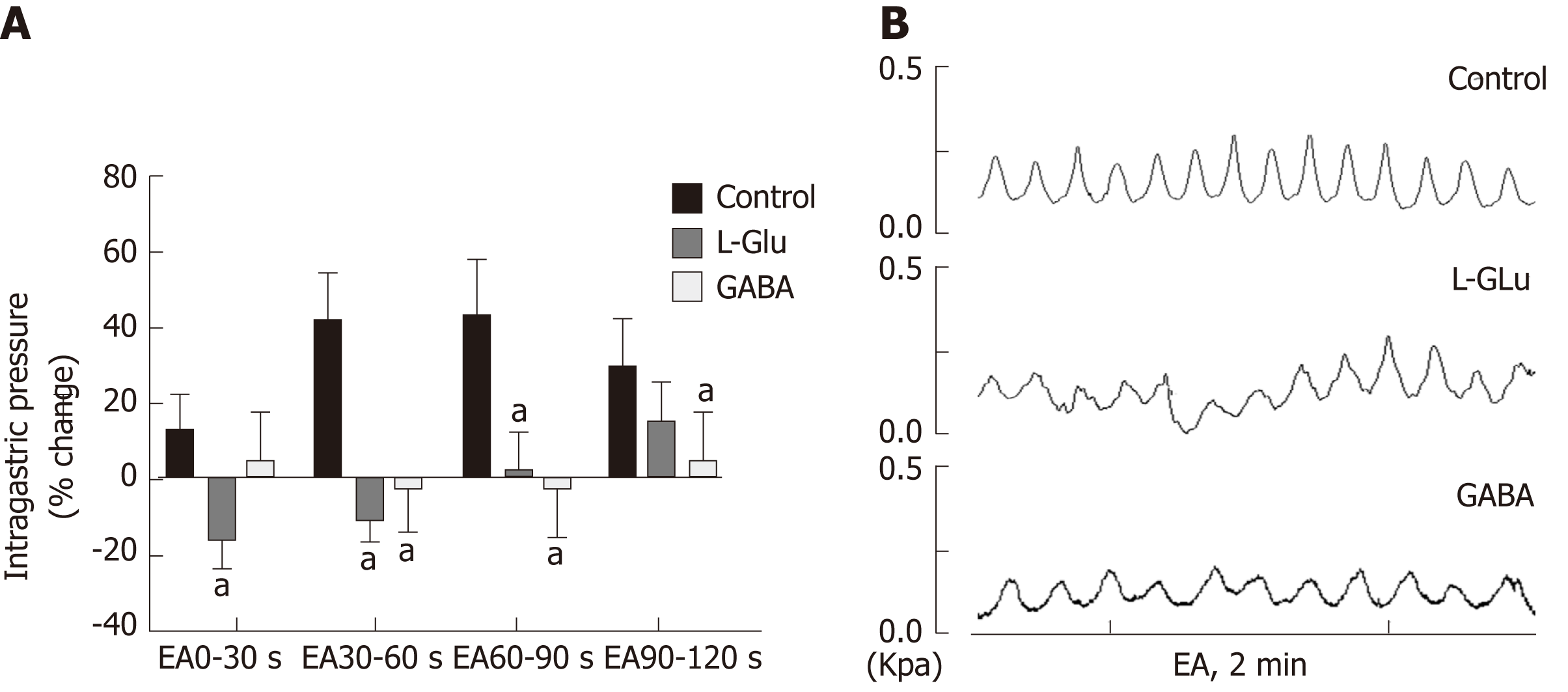Copyright
©The Author(s) 2019.
World J Gastroenterol. May 21, 2019; 25(19): 2315-2326
Published online May 21, 2019. doi: 10.3748/wjg.v25.i19.2315
Published online May 21, 2019. doi: 10.3748/wjg.v25.i19.2315
Figure 1 Effect of electroacupuncture at ST36 on gastric motility and vagus and sympathetic discharge.
A: Effect of electroacupuncture (EA) at ST36 on intragastric pressure; aP < 0.05 compared with pre-EA intragastric pressure; B: Waveform of gastric motility by EA at ST36; C: Percent change in discharge of the vagus nerve and greater splanchnic nerve induced by EA at ST36; aP < 0.05 compared with sympathetic nerve discharge during the same time interval; D: Waveform of vagus nerve discharge (upper panel) and greater splanchnic nerve discharge (lower panel). EA: Electroacupuncture.
Figure 2 Effect of electroacupuncture at ST36 on gastric motility in different surgical model groups.
A: Percentage change of gastric motility in the control group, vagus nerve transection group, and splanchnic nerve transection group; aP < 0.05 compared with the control group during the same time period, bP < 0.05 compared with the vagus nerve transection group during the same time period; B: Waveforms of gastric motility in the control group, vagus nerve transection group, and splanchnic nerve transection group. EA: Electroacupuncture.
Figure 3 Effect of electroacupuncture at ST36 on gastric motility in mouse receptor knockout models.
A: Effect of electroacupuncture (EA) at ST36 on gastric motility in wild-type mice, β1/β2 knockout mice, and M2/M3 knockout mice; aP < 0.05 compared with the control group during the same time period, bP < 0.05 compared with the β1/2-/- group during the same time period; B: Waveform of gastric movement induced by EA at ST36 in wild-type mice, β1/2 knockout mice, and M2/3 knockout mice. EA: Electroacupuncture.
Figure 4 Effect of electroacupuncture at ST36 on neurons in the dorsal motor nucleus of the vagus nerve.
A: Number of dorsal motor nucleus of the vagus nerve (DMV) neuron responses during electroacupuncture (EA) at ST36; B: Discharge frequency of DMV neurons; aP < 0.05 compared with pre-EA; C: Waveform of DMV neuron discharge by EA at ST36; D: Location of the DMV (D1-D2, location of the DMV; D2, location of injected Pontamine sky blue in the DMV). EA: Electroacupuncture; DMV: Dorsal motor nucleus of the vagus nerve.
Figure 5 Gastric motility changes after dorsal motor nucleus of the vagus nerve microinjection of different amino acids.
A: Percentage change of gastric motility after microinjection of artificial cerebrospinal fluid, glutamic acid, or γ-aminobutyric acid (GABA) into dorsal motor nucleus of the vagus nerve (DMV) (GABA-I is the inhibitory effect group, and GABA-E is the excitatory effect group); aP < 0.05 compared with the control group; B: Waveform of gastric movement changes after microinjection of artificial cerebrospinal fluid, glutamic acid, and GABA into the DMV. GABA: γ-aminobutyric acid; DMV: Dorsal motor nucleus of the vagus nerve; L-Glu: Glutamate.
Figure 6 Effect of electroacupuncture at ST36 on gastric motility after microinjection of different amino acids.
A: Percentage change of gastric movement by electroacupuncture (EA) at ST36 after microinjection of artificial cerebrospinal fluid, GABA, or glutamic acid to the dorsal motor nucleus of the vagus nerve; aP < 0.05 compared with the control group; B: Waveform of gastric motility induced by EA at ST36 after microinjection of artificial cerebrospinal fluid, γ-aminobutyric acid, or glutamic acid into the DMV. EA: Electroacupuncture; GABA: γ-aminobutyric acid; DMV: Dorsal motor nucleus of the vagus nerve; L-Glu: Glutamate.
- Citation: Lu MJ, Yu Z, He Y, Yin Y, Xu B. Electroacupuncture at ST36 modulates gastric motility via vagovagal and sympathetic reflexes in rats. World J Gastroenterol 2019; 25(19): 2315-2326
- URL: https://www.wjgnet.com/1007-9327/full/v25/i19/2315.htm
- DOI: https://dx.doi.org/10.3748/wjg.v25.i19.2315














